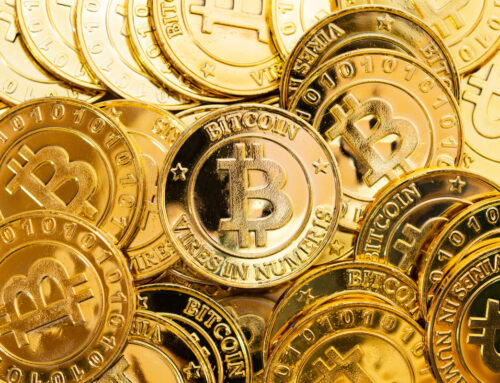South Korea Eyes Solar Power Supremacy by 2035: Can This Shift Outshine Nuclear in Just a
May 27, 2025
South Korea is on track for a major clean energy milestone. Solar power is expected to become cheaper than nuclear energy between 2030 and 2035. Rapid improvements in solar panel efficiency and lower installation costs are driving this change. By 2035, solar is projected to lead the nation’s power generation. This shift supports a national goal of 80% renewable energy, aligning climate priorities with energy security and economic growth.
South Korea’s Power Mix in 2024: Heavy on Fossil Fuels, Light on Renewables
Think Tank Ember Group’s analysis showed that in 2024, low-carbon sources generated 40% of South Korea’s electricity, nearly matching the global average of 41%.
As the world’s 7th largest electricity consumer, South Korea still leans heavily on fossil fuels, which supply 60% of its electricity.
Nuclear energy is the country’s largest source of clean power, accounting for 30% of the mix. However, solar and wind together made up just 6%, less than half the global average of 15%.
Despite rapid economic growth and rising power demand over the last two decades, South Korea’s power sector emissions peaked in 2018. This turning point came as solar and nuclear began to edge out coal. Still, emissions remain high, at around 5 tonnes of CO₂ per person. It’s nearly three times the global average.
Looking ahead, South Korea is targeting 20% renewable electricity by 2030. That figure, though a step forward, falls far short of the 60% global renewables share envisioned in the IEA Net Zero Emissions scenario for that year.


Why Solar Power Is Outpacing Nuclear?
The country’s energy model is shifting, supported by strong policies and rising investments in solar. A report titled “Assessing the Levelized Cost of Energy in South Korea” shows that solar’s levelized cost of energy (LCOE) may drop by 50% in the next decade. In contrast, nuclear’s LCOE could rise by 15% due to aging reactors and increased maintenance costs.
Solar’s declining costs give it a clear advantage over coal, nuclear, and natural gas. The report estimates that solar could supply over 60% of South Korea’s electricity by 2035, up from about 10% in 2020.
Growth will come from rooftop solar in cities and large-scale solar farms in rural areas. Thus, South Korea is seeing solar become the smartest and most sustainable energy option.
Boosting Energy Independence
EIA revealed that, “South Korea relies on imports to meet almost 98% of its fossil fuel consumption as a result of insufficient domestic resources.”
This dependence exposes the economy to global risks and price fluctuations. Transitioning to solar and other renewables aims to reduce this reliance and boost national energy security.
The country’s National Carbon Neutrality Plan links expanding clean power to building national resilience. By increasing domestic renewable energy sources, South Korea lowers its vulnerability to international supply chain issues. The plan also outlines key steps to enhance clean power, upgrade transmission networks, and expand battery storage, strengthening the grid against disruptions.


Cutting Emissions and Cleaning the Air
As of 2023, fossil fuels provide 62% of South Korea’s electricity, giving it one of the highest per-person carbon footprints in the G20. Replacing coal and gas with renewables like solar will significantly lower emissions by 2035.
The “A Clean Energy Korea by 2035” study shows that expanding solar and wind, along with a target of 10 GW of storage by 2030, can reduce fossil fuel use without building new coal plants. This shift will cut emissions, improve air quality, and help South Korea meet its climate commitments.
Kim Seo-Young from the Korea Energy Agency stated,
“Clean energy isn’t just about reducing emissions—it’s about improving public health and creating a stronger economy.”
Market Transformation Underway
South Korea’s electricity market is changing. New infrastructure and investment are making solar and wind more affordable. Analysts expect a 28% to 41% drop in the LCOE of solar and wind by 2035, while nuclear costs are likely to keep rising.
Nuclear currently makes up about 30% of power generation, but solar is set to overtake it in the next decade. Government plans include adding up to 14.5 GW of renewable energy each year from 2030 to 2035.
A $30 billion investment will support large solar projects and urban rooftop installations.
Private companies are also getting involved. As regulations change to support cleaner energy, local firms invest in solar development. New pilot programs and battery storage projects are beginning in industrial areas, with support from public R&D funding. This growth could create up to 400,000 green jobs by 2035.
These jobs will be in renewable tech, grid management, and clean manufacturing. This shift benefits both the planet and the economy.
Will South Korea Hit Its 2035 Clean Energy Target?
Reaching 80% clean electricity by 2035 depends on how quickly South Korea scales up. Current trends show that, without stronger action, renewables might only reach 21–33% of power by 2038. This is much lower than what other advanced economies expect.
Public, industry, and international partners are pushing for faster action. Sectors like AI and chip manufacturing are growing, and their energy demands are high.
If they continue to rely on fossil fuels, the country might lose its competitive edge. Thus, speeding up the rollout of renewables is essential for climate goals and maintaining relevance in the global economy.


Solar’s rapid growth, driven by affordability and smart policies, makes it South Korea’s leading energy source. No longer an add-on, solar is now central to the clean energy revolution. The next decade will challenge the system’s flexibility and resolve. The path ahead is clear: solar is leading the way.
Search
RECENT PRESS RELEASES
Related Post




